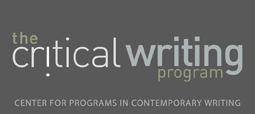Physics and Astronomy
An Overview of the Discipline
Physics is the study of phenomena that form the foundation of our nature and their applications. Physicists accomplish this lofty goal using theory grounded in mathematics as well as experiment. Penn has a combined Physics and Astronomy department, and sub-disciplines within the department include, but are not limited to:
Writing in the Discipline
Goals
The goal of physics is to advance understanding of how nature works through rigorous scientific methods. Typically, this consists of defining a problem and working towards a solution. Ultimately, physics aims to simplify complex problems, and oftentimes elegantly simple relationships emerge.
Reasoning
Physicists favor explanatory reasoning and place a heavy emphasis on logical clarity. Writers must explain how they reached their conclusion by synthesizing previous research and their own ideas.
Evidence
Legitimate evidence consists of rigorous mathematical description and concrete evidence. New theories must also be consistent with previously proven ideas. Oftentimes, theoretical physicists use a mathematical proofs to draw logical conclusions. Models must be tested by experimental physicists and subsequent data analysis to be validated.
Research
Physicists rely on both experimental data as well as the ideas of colleagues in their field. The most successful breakthroughs use new concepts, which are usually found through mathematics. It is very important to be connected to larger knowledge in the discipline.
Authorship
Most theoretical papers are written as small collaborations, and some may be single-authored. Experimental papers may often involve bigger collaborations and an extensive list of authors.
Writing Tips
Important Criteria for Student Writing
The most important aspect of doing work in physics, whether it is an undergraduate problem set or a professional paper, is mental clarity. Thus all reasoning and evidence should be presented in a logical, and logically contingent, order.Style Preferences
Most physics publications are featured in academic journals. Academic journals impose strict word limits and formatting on submitted articles, so writers must write clearly and effectively and select quantitative and visual evidence to support their arguments. While famous papers in the past included memorable metaphors, the current trend privileges clear and concise language over figurative language.
Common Errors
Most beginning students do not think clearly enough about the problem sets, which leads to errors in the process of justifying their answers to the solution the problem. Furthermore, in lab reports, some students forget that every paragraph should be in the service of supporting a claim. In higher-level physics, mistakes are usually technical.
Genre
Student Assignments
Undergraduate students are primarily assigned problem sets to test their grasp of specific concepts. Solving the problem sets requires logical reasoning; the language just happens to be numbers and mathematical symbols. Graduate and honors students might be involved in giving lectures, writing a thesis, or publishing papers, all of which require clear and concise writing skills.
Professional Writing
The physics faculty at Penn write extensively. They write for journals, which involves highly technical languge, strict formatting, and enforced word limits. They also write reviews of other papers, grant proposals (an example of persuasive writing), letters of recommendation and promotion, and departmental reports.
The Writing Process
A Guide to Writing Physics Papers
Step One: Start with a clear idea
It is very important to have a core idea at the center of the article. This is the key scientific results that have been discovered. Usually, the papers with the best core ideas are the most clear and well-written.
Step Two: Build an outline around the idea
Writing an outline, and using relevant equations, is the next step in developing the paper. This lays the foundation for the actual writing.
Step Three: Write the paper
Initially, it is best to get just something written down. With a clear idea in mind, the thoughts will hopefully organize themselves. One must be well-versed in the field to know the technical language.
Step Four: Revise the ideas and paper
The revision process is long, as ideas may change, particularly if the work is evolving. Papers occasionally die, but this is a crucial step.
Additional Resources
Helpful Books and Articles
Physics Department Research PageMeet the Professors

Dr. Charles Kane
Dr. Kane primarily studies quantum electronic phenomena in solids, a topic in condensed matter physics. His discovery of topological insulators has earned him numerous awards. Dr. Kane believes that writing is important no matter the discipline. More...

Dr. Mirjam Cvetic
Dr. Cvetic works on theoretical physics involving fundamental interactions and high-energy theory. This special discipline aims at uncovering the basic forces of the universe and includes black holes and string theory. Although Dr. Cvetic is not a native English speaker, she is able to write effective papers due to the beauty and clarity of mathematical reasoning. More...

Dr. Mark Goulian
Dr. Goulian jokingly describes his writing process as a struggle that he overcomes. He typically does not use outlines, although he recommends that students should learn how to pre-write effectively. More...
